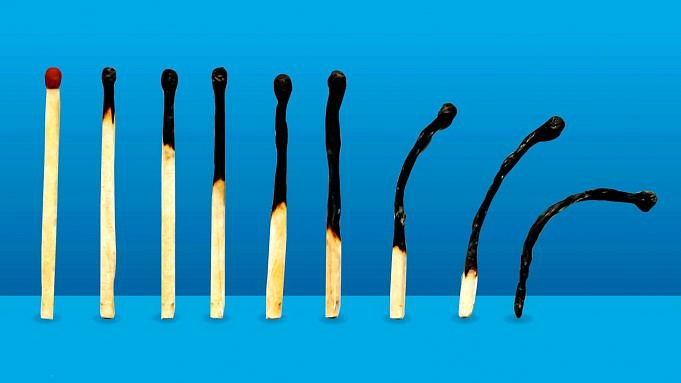There aren’t many people who get excited about mattresses. So how cool could a mattress factory of all places really be? The answerso, so, SO cool!
Earlier this week I had the opportunity to tour Brooklyn Beddings brand new state-of-the-art factory. The new factory is located in Phoenix, Arizona. It is located in the heart of Phoenix, Arizona.whooping 145,000 square feetCost and accessibilityTo construct. It is also called aBIG place.
Brooklyn Bedding manufactures some of the most popular and well-made mattresses across the US. They are most known for the design and manufacturing of their own brands,Brooklyn Bedding and DreamFoam. The mattresses are made primarily from memory foam, latex, and polyfoam.
Brooklyn Bedding and DreamFoam were among the few online companies to actually own their mattress factories. This allows them to have a mattress factory.You have great flexibility when it comes to design, construction, materials and assembly. And, of course, the best price.. Theres a lot that goes in to building a new mattress. Covers and other fabric pieces must be woven, cut, and sown together. Foams must be measured, cut, formed, and glued. And of course, all of the individual components must be assembled together into a final mattress before packing the entire thing into a box, ready to be shipped.
The tour through Brooklyn Bedding was an eye opener for me to be sure. You can view my entire video tour or scroll down to see the visual tour. This will show you exactly how your mattress arrives at your home.
Step 1, The CoverRaw textiles are the first step in this process. These are woven into what will become the top piece of fabric for the mattress cover.
This machine sews together the mattress cover from raw textiles.
Step 2, Cover the Side Panels A separate, but similar machine, weaves together the the side panel pieces.
They are woven on a single sheet, and then cut. This creates about 12 side panels from one roll. (Note the 15 cm long cuts).This machine cuts and weaves the sides for the mattress cover.
Step 3: Master Seamstresses Once the cover pieces have been woven together by machines master seamstresses sew the pieces together by hand. This is how quickly these women can go through a cover!
The mattress cover is sewn together by workers.
Step 4: Complete the top cover This is what a mattress top cover looks like. You will use the thinner material that hangs from the sides of the cover to sew together the side panels with the rest of the mattress.
This is a 100% completed mattress cover.
Step 5: Support Foam At the other end of the factory youll find the foam slicing machine. Massive blocks of foam, about 1.5 m high, are sent through this machine. The machine measures the foam and cuts it to the right size. The foam then travels down the line to the next step. (watch video above to see this machine in action!)
This machine can cut huge blocks of support foam.
Step 6: Convoluted Foam Core Next up on the foam line is the convoluted foam machine. It has rows of spinning teeth that cut the foam into 2 equal sections and carve in the convoluted channels. These foam channels allow for better deep compression support and breathability in the foam, improving cooling.
This machine creates the convoluted channels for the support foam.
Step 7, Final Foam CoresThis is the end with the finished convoluted support foam. Not pictured is the machine that applies a thin layer of glue. Additionally, after the glue is applied this particular mattress (its one of the DreamFoam mattresses) needs two foam layers stacked on top of each other.
This machine presses the layers together and ensures they remain bonded forever.This is the end of the line with a completed convoluted foam core.
Step 8, Foam Slicer Once the foam cores are completed they are sent to the cutting station. This machine cuts any excess from the foam, ensuring it is sized appropriately for the mattress its going into. Even with an insanely sharp blade and something as easy to cut as foam, the blades must be replaced every 4 weeks due to the sheer volume of cutting. The excess foam is bailed and sold to other companies.
This machine trims excess foam to ensure it is the right size.
Step 8, Component Assembly The completed foam cores and covers are brought to the primary assembly line (it sits in the middle of the factory). Workers sew and assemble the components together to form the completed mattress.
The foam cores are brought to the primary line, where they are assembled.
Step 9, Sewing Everything Together One of the most skilled positions on the factory floor are the workers who sew the completed cover and side panels together within the foam structure. There is little room for error. The mattress is surrounded by massive industrial sewing machines that rotate around it (they are mounted on a rail system). Havier, pictured in the middle in the white shirt, is an expert in this type of work. Since 2001, Havier has been working for Brooklyn Bedding.
Workers sew the mattress cover to the foam pieces. This is the advanced roll packing machine.
Step 11, EnjoyThat’s all! All mattresses are shipped across the nation. Below is their newest mattress, the Brooklyn Bedding mattress uncompressed and on my King sized platform bed.
Brooklyn Bedding mattress unboxed and on my bed frame at home!



